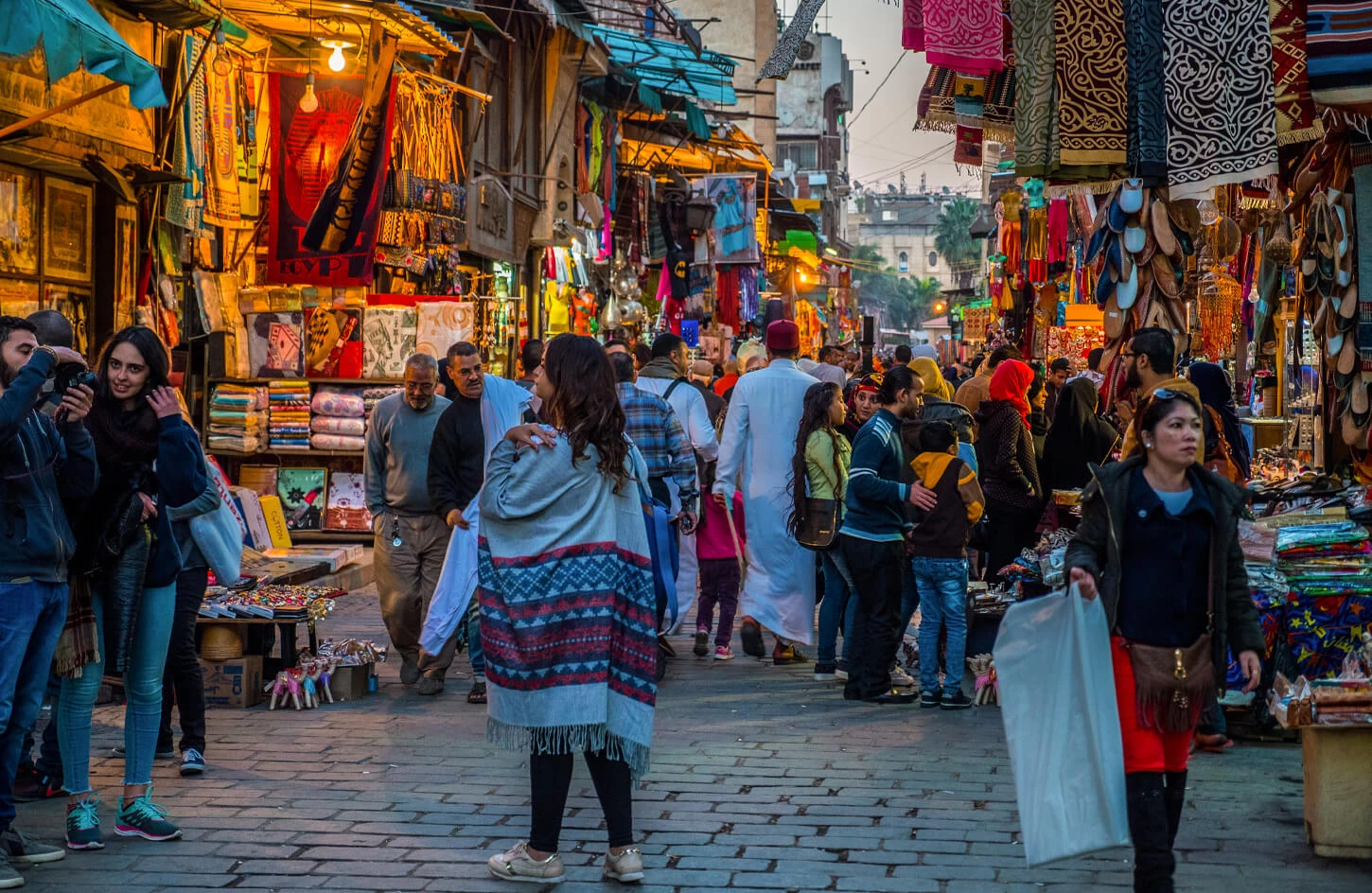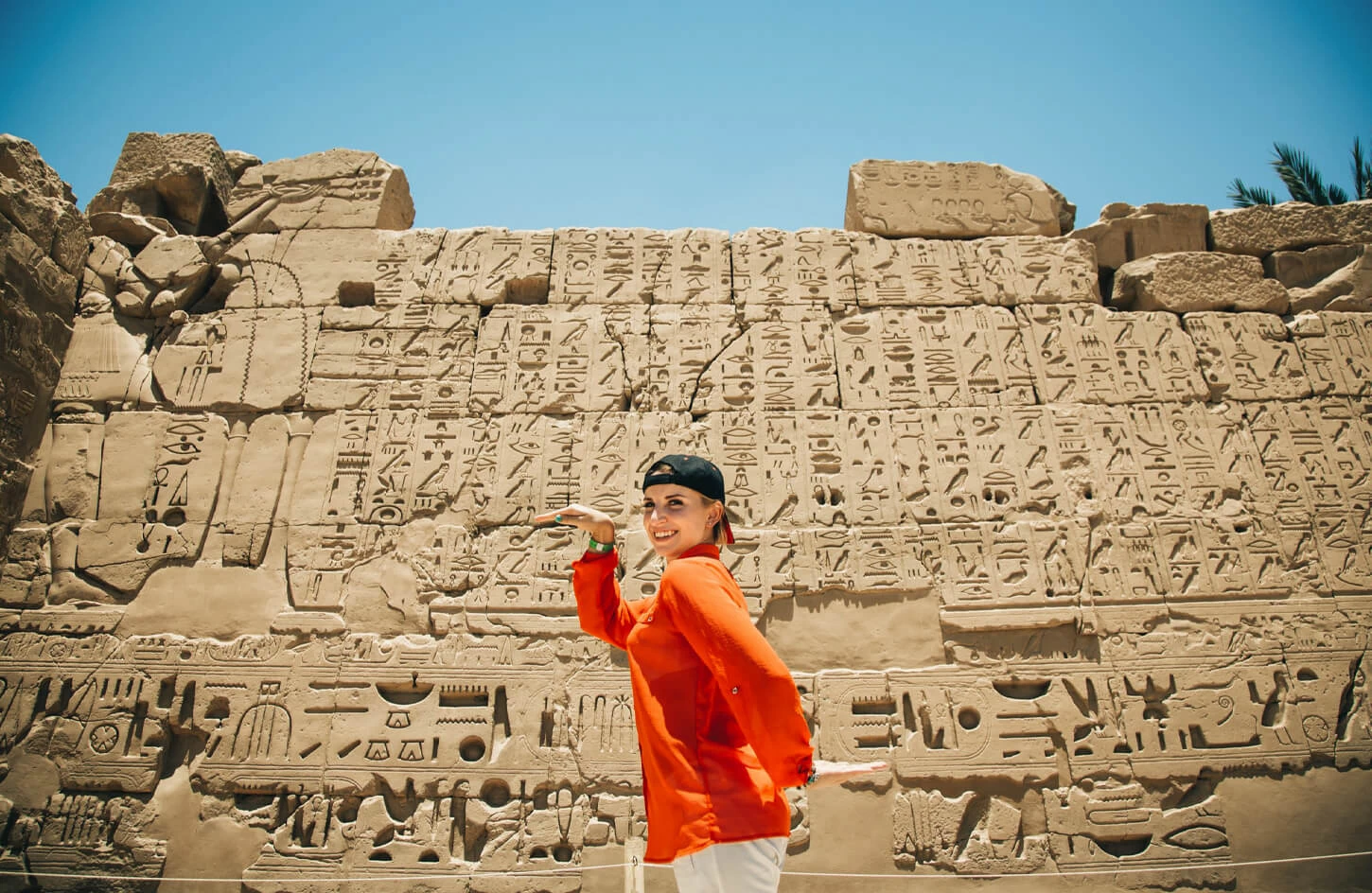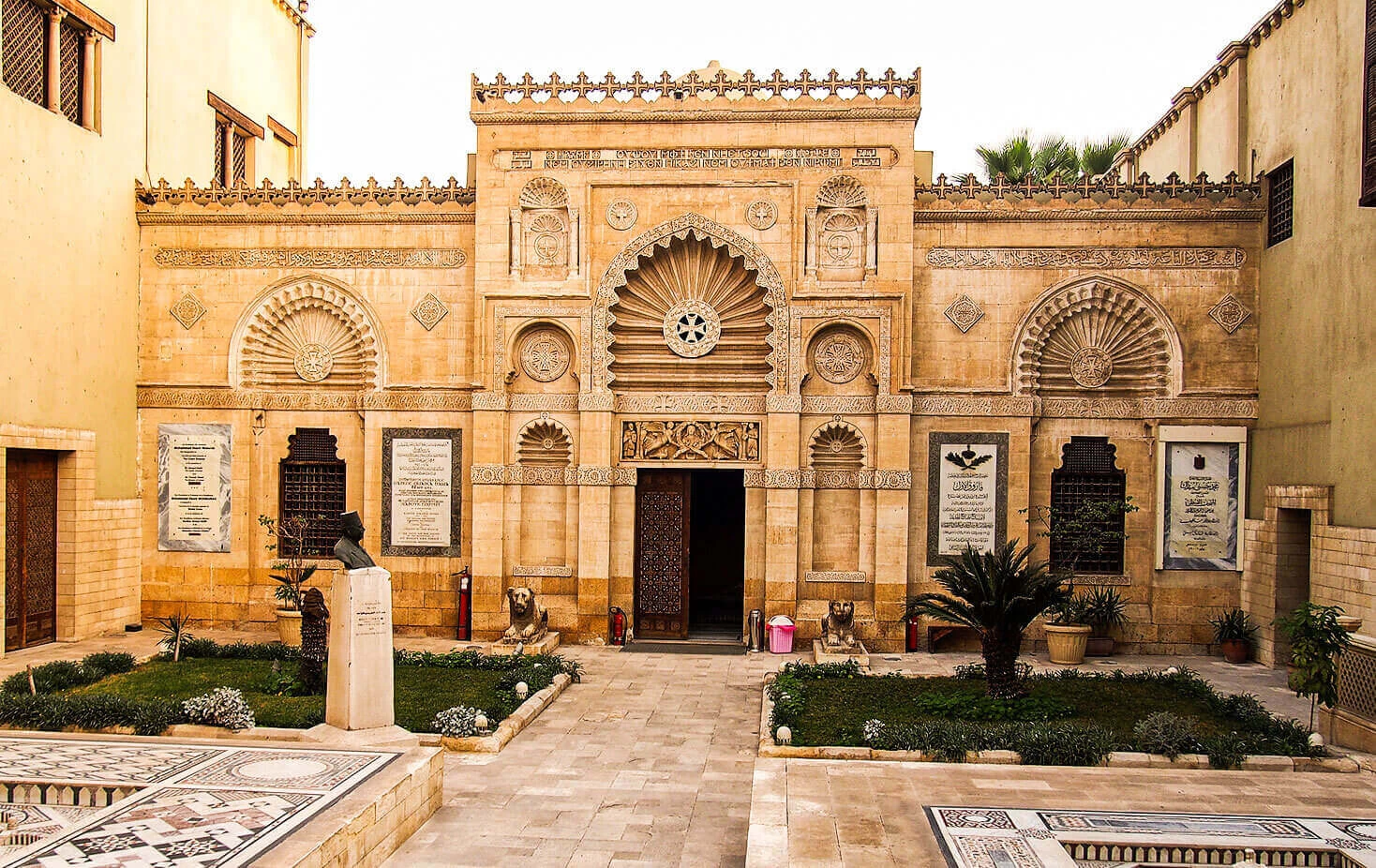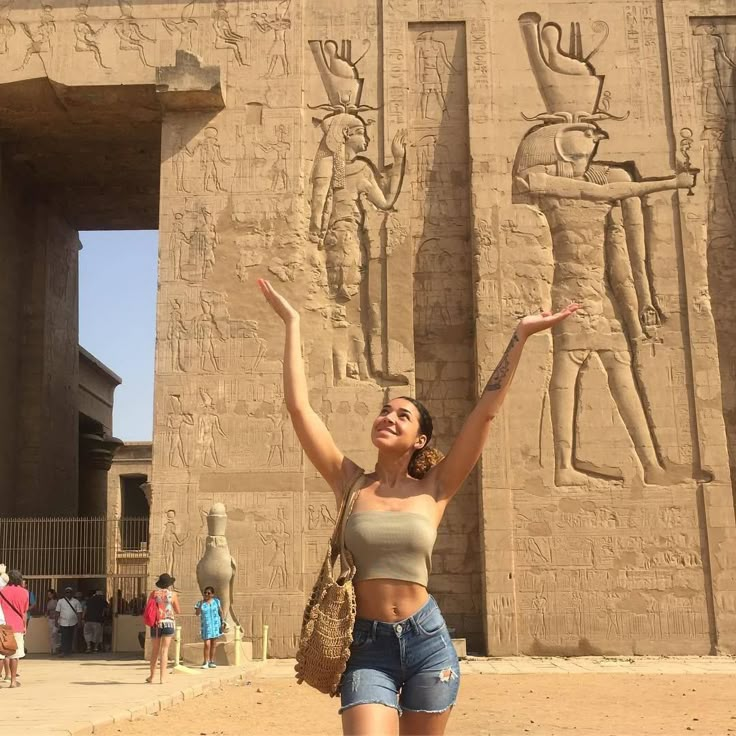Must-Try Egyptian Dishes: From Koshari to Shawarma
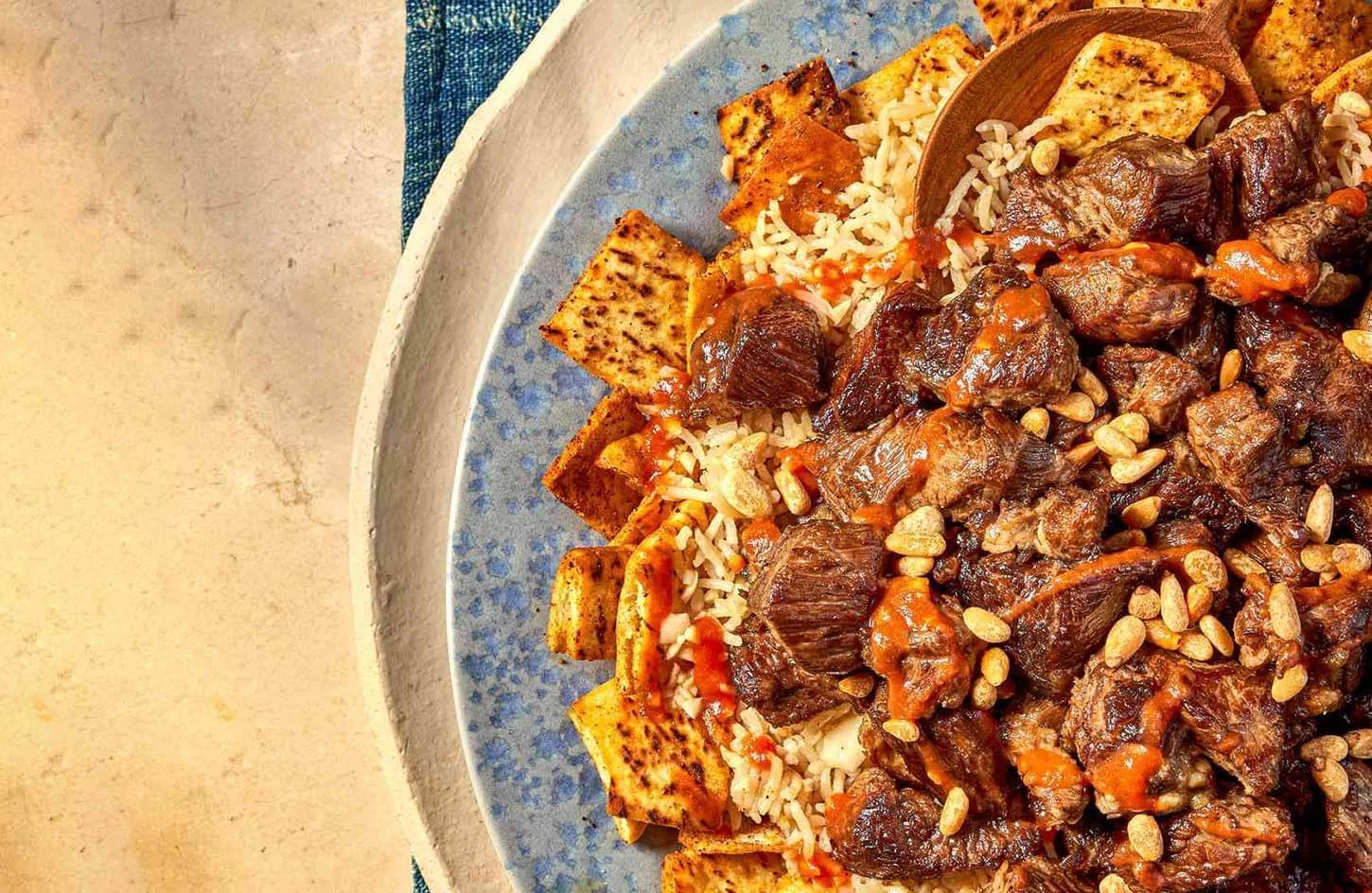
The traditional food selection in Egypt represents only a small percentage of this country's eating traditions. The traditional Egyptian dishes combine cooking elements from Mediterranean cuisine with those of Middle Eastern gastronomy. Various types of food, including street food Koshari alongside fancy restaurant dishes, exist throughout Egyptian eateries.
Prepare yourself for genuine Egyptian dining experiences. Your taste sensors will bring you pure joy!
Introduction to Egyptian Cuisine
The culinary heritage of Egypt combines tastes accumulated through more than 5000 years of historical development. The food culture results from an integration of Mediterranean and Middle Eastern culinary traditions. The dishes in Egyptian cuisine combine spices with fresh ingredients and a specific method of cooking.
Three staple foods in Egyptian meals include legumes together with rice and vegetables. The centuries-old history involves the enjoyment of Egyptian cheeses, including Domiati and Mish. People in Egypt enjoy Aish baladi traditional bread daily since it serves as a fundamental component in their meals.
Ful medames and Koshari emerge as notable dishes that belong to Egyptian food culture. Food in Egyptian culture functions beyond sustenance because these dishes transmit cultural prophecies. People in Egyptian communities stay connected through their communal tradition of cooking and sharing street foods. Tasting Egyptian cuisine offers a historical adventure of multiple culinary elements.
The Essence of Egyptian Culinary Delights
Egyptian cuisine, as a result of history, geography, and culture, is sometimes characterized by the prevalent use of local ingredients that are the soul of its dishes. We find our linkage with the past besides the usage of other foods like wheat and barley in today's meals.
The banks of the Nile are irrigated with good vegetables, beans, and fruits. With these ingredients, Egyptian cuisine becomes colorful and exciting. Spices like cumin not only add flavor but also illustrate the ancient Egyptians' knowledge of food.
- Sharing meals is a big family event during occasions such as Ramadan, where people feast together.
- Sham el-Nessim celebrates spring with the custom of eating certain kinds of food that bring people together.
- Ancient Egyptians showed some intelligence by practicing food preservation, such as drying fruits.
Trade routes have contributed their fair share to the sand-swept variety of Egyptian food. Exotic spices in working harmony with local taste have satisfied the modern-day palate. Food fairs let people try dishes such as Ful Medames and Koshari.
Grilled fish and sweet delicacies made from honey and dates speak of Egypt's culture. Egyptian cuisine is more than just food. It is about celebrating family and community.
Popular Egyptian Foods You Must Try
Egyptian cuisine is flavor upon flavor, which attracts all. To distinguish the good from the exemplary, try eating the most loved dishes across Egypt. Here's the list of delicious Egyptian dishes you can't miss:
-
Koshari: Koshari is a great favorite in Egypt. It is a mixture of lentils, rice, chickpeas, and tomato sauce, topped with crisp fried onions, enjoyed at any time.
-
Ful Medames: A national dish constituted by hot fava beans that are served for breakfast. Most times, this dish goes with falafel and eggs, an Egyptian classic for breakfast.
-
Shawarma: Available on almost every street, shawarma is marinated meat in a pita with mouthwatering sauces. A true street food legend, shawarma defines the exuberance of Egyptian food.
-
Falafel (Ta'ameya): Find these green, moist fava bean balls at the street-side stalls. The thin yet crispy shell pairs well with the soft, tasty inside.
-
Sayadieh: A coastal dish consisting of yellow rice with onions and spices and fried fish- a mix of great flavors.
-
Mango Juice: From raw mangoes and favored during the Holy Month of Ramadan, you can find bottled juice almost anywhere for a quick sip.
-
Karkade: This hibiscus tea reduces blood pressure and is chilled and served at hotels. It's refreshing on warm days.
-
Mint Tea: A wide tradition in Egypt, it is a refreshing drink anytime. Pair it with pastries after the meal for a sweet ending.
-
Zalabya: Golden fritters that are majorly favored during holiday celebrations such as Eid. Pour some syrup, Nutella, or sugar over them for a sweet delight.
From feasts to refreshing beverages, these serve to highlight Egypt's rich culinary traditions. Expect to uncover many flavors if you explore local joints and street vendors. Do check out these famous Egyptian foods during your Egypt Tour.
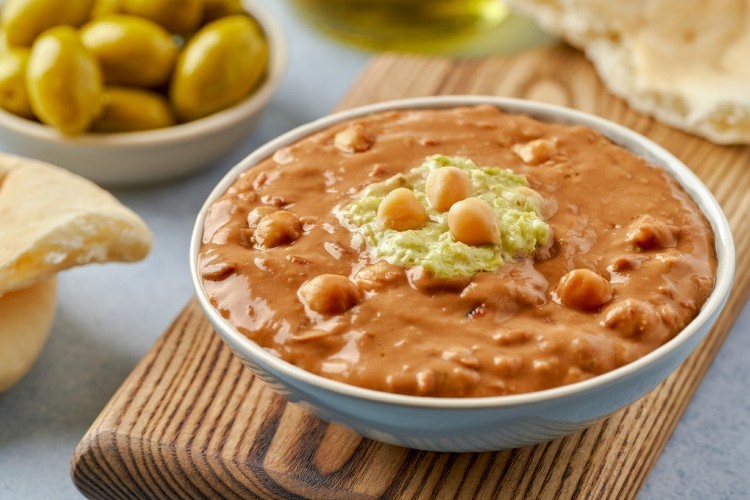
Traditional Egyptian Dishes Explained
The exploration of the traditional Egyptian dishes is a fusion of tastes and history. Those dishes include Molukhiyah, Kebab, and Mahshi, which mostly represent Egyptian cuisine. Famous Egyptian recipes were sought from them.
-Molukhiyah forms the basis of a thick, savory soup made from molukhiyah leaves. In the 11th century, it was banned by Fatimid Sultan Hakim. This adds a fascinating page to its history. Leaves are boiled using garlic and coriander in chicken broth for flavor.
-Kebab, quite popular in Egyptian cuisine, is made from marinated lamb or chicken for grilling to perfection. This is one of the best examples proving the emotions Egyptians have for the outdoors as they take out this dish for celebrations and family gatherings.
-Another typical Egyptian dish is Mahshi. It is a vegetarian dish made of stuffed zucchini and eggplant. Stuffed, it contains rice, herbs, and spices. It is baked and later served with tomato sauce, showing the application of fresh local ingredients.
-Besides these dishes, two other major dishes are Feteer Meshaltet and Besarah. Feteer Meshaltet is flaky bread, whereas the other is a creamy green puree. Both of them help in feeding a person and tying him with the Egyptian culture.
Browse famous Egyptian recipes such as Shawarma, Hummus, and Fattah. Each one makes a multi-layered richness of flavors and stories. The traditional Egyptian recipes tell the story of history and culinary evolution with every bite.
Must-Try Egyptian Street Food
Eating Egyptian street food has fun stories to tell about the culture. So many busy markets where their stalls sell food exhibit the real authentic meals from Egypt. Some of the famous cuisines are Tamiya, Hawawshi, and Ful, and they are quite representative of the tastes of this place.
Tamiya is a known delicious falafel made from chickpeas and must be eaten. On the other hand, it is sold by use of a sandwich or as it is and is priced from $0.17 to $0.50. For that extra cost of $0.17 to $0.50, tahini sauce is even better. This is because it has ingredients that prove the country's love for legumes.
Ful Medames, a dish of fava beans, is perfect for breakfast. Switching to a full sandwich from $0.17 to $0.34 and a pack of beans will cost $0.34 to $0.84 and will surely make the whole meal that fills one's experience with the real local taste.
- Hawawshi: This is a traditional bread stuffed with minced meat and spices for about $1.
- Koshary: Rice, lentils, and pasta come together in this national dish available from $0.84 to $1.68 at street vendors, filling you up for little cash.
- Shawarma: The favorite street food for many-these are spiced chicken or beef, large sandwiches of which sell at $1.18 on average.
Savoring these foods would bring the vivacious life of Egyptian streets to your mouth. With every bite, you would feel one with a whole heritage of history, mingled with the bizarre yet magnificent traditions that people uphold. Have a taste of these heavenly goods and dive into a memory that would stay in your mind forever.
Famous Egyptian Recipes
Bringing Egyptian flavors into your kitchen is a relatively simple affair. These well-known Egyptian recipes highlight the rich culture and taste of Egypt and will surely assure some great "oohs" and "aahs" from your friends and family.
- Koshari: The national dish of Egypt, koshari unites lentils, rice, chickpeas, and pasta, gradual layers heated with tomato sauce, then garnished with crispy onions. Koshari works well on all occasions.
- Ful Medames: Ful Medames is a traditional Egyptian breakfast meal made of fava beans prepared with garlic and olive oil. Have this warm, complemented with pita bread, and enjoy it as a sumptuous meal.
- Chicken Shawarma: The marinated chicken is prepared with incredible spices. Wrapped in pita with vegetables and garlic sauce, it becomes a delicious treat.
- Umm Ali: An uncomplicated dessert, Umm Ali is a bread pudding made from pastry, nuts, raisins, and coconut. A sweet treat.
- Phyllo Meat Pie (Egyptian Goulash): This one is prepared with phyllo dough and spiced ground beef and serves as great food for an appetizer or a main dish.
- Bamia: A stew with anything from meat to okra, Bamia can be made with lamb, beef, chicken, shrimp, or fish. It's very versatile and delicious.
- Hawawshi: Egypt's version of the hamburger; crispy deep-fried pita pockets filled with ground beef, onion, and peppers-this dish is full of flavors.
- Rice Kofta: Ground meat mixed with rice and herbs served with rice or bread; delicious for any meal.
- Kunafa: A Middle-Eastern dessert, Kunafa consists of crispy dough, cream filling, and sweet syrup and is topped with pistachios.
- Basbousa: This dessert made of semolina and yogurt topped with almonds is a crowd favorite. A common sight at Egyptian vendors.
These Egyptian recipes will bring Egypt's cuisine to your home. Taste these flavors and share them with your loved ones.

Exploring the Heart of Popular Egyptian Foods
Egyptian cuisine is rich and complex, a fascinating array of culinary traditions and variations stemming from several cultures and many local ingredients. Across the numerous areas in Egypt are vast taste contrasts and cooking methods: contrasts that each display peculiarly something about Egyptian food's uniqueness.
Egyptian food is interlaced with festivals and traditions. Fattah is a royal dish for weddings and Eid al-Adha: to celebrate, lest we forget the togetherness. Feseekh on Sham el-Nessim adds to the fun with its own special taste and appreciation.
- Kahk and Ghorayba cookies are special treats to enjoy on Eid El Fitr and sweeten the celebrations.
- Khoshaf, a refreshing drink made with dried fruits, is enjoyed during Ramadan Iftar meals.
- Ruz Bil Khalta is a special dish for very important occasions and family gatherings.
Egyptian food is the traditional kind and modern. They share Kabab and Kofta with pleasure—Koshary and Ful Medames, vegan options that reflect this postmodern flow, satisfy every diet.
The use of spices such as cumin, coriander, and garlic is what gives Egyptian cuisine its unique character. They help to create an authentic taste. Immerse yourself in the soul of these flavors, breathe in the culture of Egypt, and experience the gift of food that brings everything together across generations.
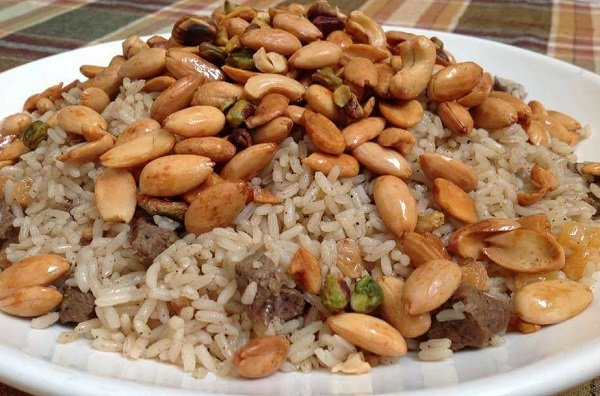
Ful Medames: The Breakfast Staple
Ful Medames is one of the Egyptian's loved breakfast dishes. It is a preparation of fava beans with garlic, olive oil, and spices. Such a mixture serves as a warm and tasty meal. Exploring Egyptian foods, you will find ful everywhere. It's a major part of their cooking traditions.
For this recipe, the following ingredients are required:
- 2 tins, each containing 400g of fava beans
- 150g tomatoes
- 1 onion
- 4 cloves of garlic
- olive oil
- cumin and oregano for seasoning
- and pul biber or Aleppo pepper
- juice of lime and lemon
- freshly diced tomatoes,
- red onions
- and cucumber for topping
- finely chopped parsley and coriander. Perfect at any time of day,
this vegan feast is breakfast worthy only on its own or served with eggs, pita bread, or flatbreads.
It takes 35 minutes to prepare for 4-6 persons. Deeply entrenched in Egypt, for it is a national dish, beloved by Cairo and Giza. Its history goes back to Ancient Egypt, as it demonstrates the culinary history of the region. This is now found all over the Arab world, each of which has its variety, such as Lebanon, Iraq, and Morocco. This dish has been made into a popular staple all over. Excess can be stored for up to three days. That way, you keep enjoying fulmedames. Add it to any meal, and it will be healthy and delicious.
Koshari: A Dish for Every Occasion
-Koshari is Egypt's national dish, loved for its hearty mix. It has rice, lentils, and macaroni, topped with spicy tomato sauce and crispy onions. It takes about 1 hour and 30 minutes to make, making it a great, affordable meal for any time.
-Traditionally, Koshari uses short-grain rice, but some chefs prefer Basmati or Jasmine. Vermicelli adds flavor and texture. Lentils need to cook for 25-30 minutes to be tender.
-Koshari is a vegetarian dish that's filling and cheap. It uses common ingredients found in Egyptian homes. Its history goes back to the mid-19th century, influenced by Italian, Indian, and Middle Eastern cuisines.
-The dish's sauces are key, with a rich tomato sauce and a touch of cumin. You can find Koshari in every Egyptian restaurant and at street vendors. It's loved by both locals and tourists for its mix of carbs and protein.
-Trying Koshari in different places in Egypt is a culinary adventure. It's a must-try for those exploring Egyptian recipes. A trip to Egypt means enjoying this dish and experiencing the country's warm hospitality.
Shawarma: A Must-Have Egyptian Delight
-Shawarma is a darling of the Egyptian street food scene. It made its way into the hearts of ravenous people after the fall of the great Ottoman Empire. Lamb, chicken, and beef are the favorite meat substances for marinating with spices and yogurt. This makes the meat taste good and remain tender after cooking.
-The meat is grilled and stuffed into Arabian flatbreads. There will be fresh vegetables such as tomatoes and cucumbers. A drizzle of tahini sauce ends it all. For vegetarian options, one can find falafel and grilled vegetables.
- Meat fillings: flank steak, chicken, lamb, beef
- Toppings: Shredded lettuce, tomatoes, pickles, and tahini sauce
- Serving style: Wrapped in flatbread or pita
-One must try shawarma from a local vendor to get it to taste right. They do shawarma perfectly. You will keep a local business afloat while sampling great shawarma.
-Shawarma must be paired with other Egyptian specialties such as ful sandwiches or koshari. These dishes are indicative of the extravaganza the Egyptian food culture has to offer. Each meal is put up for fun exploration.
Delicious Egyptian Desserts
In essence, Egyptian desserts are the pathway to glorious delicacies. The uniqueness of these sweets comes from their ingredients and tastes. They are prepared to sweeten times of gathering and celebration.
Harissa has a unique character; it is chewy and sweet. Harissa takes about 1 hour and 10 minutes to make, and the ingredients:
- 1 cup sugar, 1 cup hot milk
- 500 g semolina
- 2 tablespoons all-purpose flour
- 1 cup unsweetened coconut
- 1 teaspoon baking powder
- 1 cup ghee or butter
- 2 tablespoons honey
The filling contains semolina, coconut flakes, and hazelnuts, while honey makes it really sweet. Then a syrup mixture of sugar, water, and honey is drizzled over it to really accentuate the flavor.
Basbousa and kunafa are also among the most common. Mehalabeya is a light custard of milk, and Roz bi laban is a creamy rice pudding. Ghorayeba is a fragile cookie made especially during Ramadan.
By tasting these desserts, you will get a glimpse of Egyptian culture and craftsmanship. Each one shows the creativity and culinary history of Egypt. They are integral parts of traditional Egyptian medley and a must-try for food connoisseurs.
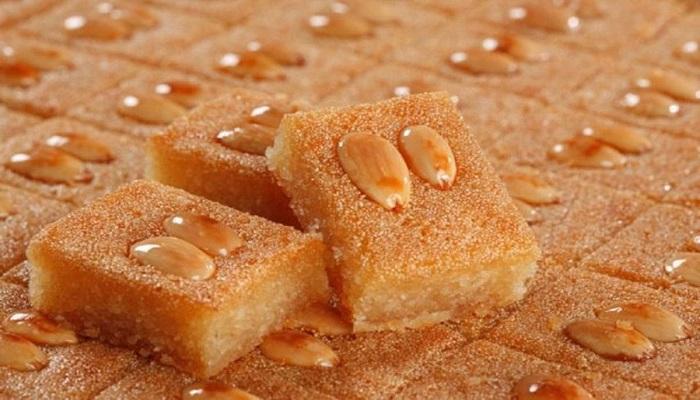
The Role of Spices in Egyptian Cooking
-All those spices mark the genesis of Egyptian cuisine. They can turn traditional dishes into great dishes. Each spice delivers its flavor that shows how rich the food culture in Egypt is.
-Cumin is a major spice in Egyptian cooking, by which it is used in fish, salads, and in foul Medames. So, it's a spice whose flavor goes well with many other foods.
-Another spice that plays a big role in Egyptian dishes is coriander. It appears in the molokhia and contributes to its flavor. Ginger works best in sweet and savory dishes. It also helps prevent nausea.
-One of the most treasured spices in Egypt is cardamom. It is used in meat, fish, and poultry dishes. It also adds flavor to coffee and tea. Cardamom is also thought to be an aphrodisiac and is rich in health benefits.
-It is strictly brewed as a tea, hot or cold. It is very good at fighting infections and lowering high blood pressure. Mint is used in Bedouin tea for its digestion benefits.
-Black cumin or nigella seeds earned their importance in the ancient culture of Egypt. This spice is warm and spicy in character, true enough to flavor any dish wonderfully and good for health as well.
-The lentils and chickpeas count in number when preparing different dishes such as koshari and hummus salad. Likewise, fava beans are contained in foul medames and ta'meya. Eggplant mainly works in moussaka. Ghee enriches the dish.
-Today, a mixture of spices such as coriander, bay leaves, and cloves is used in mulukhiyah and soups. Cinnamon is one of those spices that have been useful in Egypt since ancient times in food and for medicines.
All these varieties of spices make the dish great. Knowledge regarding these spices teaches us how to appreciate the flavor of the dishes in Egypt.
Best Restaurants to Experience Egyptian Cuisine
You have firsthand experience of all these restaurants, but to really enjoy the best of Egyptian food, you must visit the very best dining establishments scattered all over Egypt. You have everything from delightful street food to upscale dining experiences. Well, here are some recommendations that surely will not be easy to say no to:
Abou El Sid Restaurant—As the name suggests, this restaurant is a culturally authentic property that boasts a range of traditional dishes, whisking you from meter to meter into the heart of Egyptian culture.
Abou Tarek—It is a kind of 5-storied heaven for koshari, which is known to all as the national dish of Egypt. It's made fresh to order, so it's good to go any time of day.
Zööba—Street food for someone who likes fusion through modern means. Small but nice dining atmosphere.
Felfela—Near the Egyptian Museum, Felfela serves quite addictive relief dishes: falafel and baba ghanouj, along with rice pudding that you will never forget.
El Malky—Opened in 1917, this sweet shop is the best place to experience roz bil laban, which is a rice pudding that even bewilders people who don't usually eat sweets.
Granita—Nestled right in the grounds of All Saints Cathedral in Zamalek, this cafe is known for its heavenly toffee date cake. It's a try-all type, really.
Naguib Mahfouz Cafe—A very nice place located right by the bazaar of Khan El Khalili, perfect for having a glass of fresh juice or mint tea with an astounding view.
El Sheikh Mohamed: A tiny corner in Al-Haram known for camel liver, where one can taste a sample of Egyptian cuisine.
Horreya—It serves authentic dishes of an age-old 80 years. They also have a very difficult license for serving alcohol, which makes the experience very unique.
Sobhy Kaber—This is the place in Rod El Farag where a lot of people flock for their long list of traditional dishes. However, prepare for long queues because it is always busy, especially during the peak times.
Join a culinary exploration trip such as Bellies across Route for more experience. You will discover hidden gems across Downtown Cairo. It promises a memorable 4-5 hours across the city with an estimate of $72 plus tax.
Planning Your Travel to Taste Egyptian Foods
-Make sure to eat all the delicious foods when planning a trip to Egypt. Food tours are a great way of tasting local favorites like hawawshi and koshari but also a chance to engage with the local scene and learn about the food culture.
-Another entertaining experience would be cooking classes, where the chefs teach you how to prepare dishes such as fuul medames and ta’ameya while explaining the ingredients or the cooking techniques linked to the dishes used in Egyptian cuisine.
-Have a plan to explore famous markets and restaurants. Start with ful medames for breakfast, lunch with molokhiyya and mahshi, and finish with grilled meats or koshari.
-Lastly, do not miss desserts like umm Ali or roz bel laban. Never forget that bread is the centerpiece of every Egyptian meal—a round flatbread called Aish baladi is a must-try for you. Every meal could be a trip through Egypt's history and traditions, so take your time to enjoy every bite of the journey!
The popular Egyptian foods represent a whole world of flavors and traditions. Each dish tells a story of culture; from Koshari, the national dish, to Ta’ameya, Egypt's very own falafel, every meal is special.
Egyptian food is centered around sharing and connecting. Street food to Konafa; while savoring both, you'll feel the warmth of Egypt's hospitality. Popular and hidden gems; try them all.
Your Egypt Day Trips will offer you authentic Egyptian flavors, insights into local food traditions, and an immersion into Egyptian culture. It is an opportunity to create memories over wonderful food.


